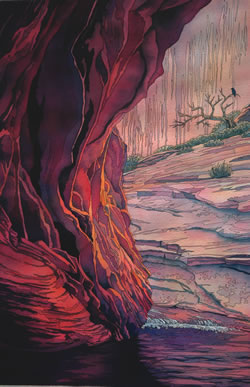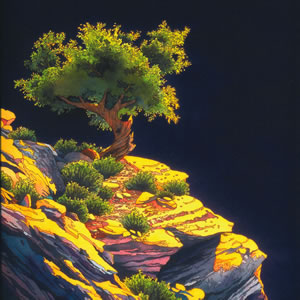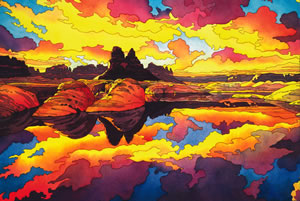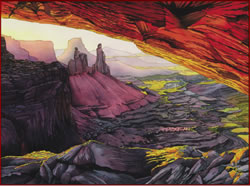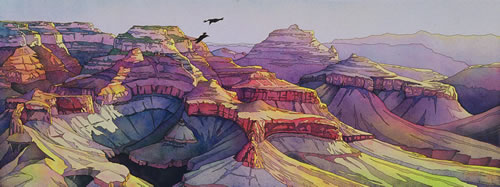Artist of the Month - October 2005 |
|||||
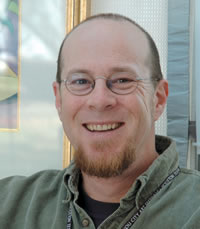 I
enjoy reading fiction populated by characters whose names
clearly represent a significant attribute of their personalities.
Oddly enough, reality often imitates art (as much as the
other way around) and I’m always pleased when somebody’s
name so clearly reflects a major trait, such as Jonathan
Frank’s. I
enjoy reading fiction populated by characters whose names
clearly represent a significant attribute of their personalities.
Oddly enough, reality often imitates art (as much as the
other way around) and I’m always pleased when somebody’s
name so clearly reflects a major trait, such as Jonathan
Frank’s.Although Frank is a true artist in the sense that he depicts the world as he sees it and makes a living doing so, there seems to be no artifice to the man himself. He is candid, open, honest... well, frankly put, he is frank. Why make such a point of the aptness of Frank’s name in describing his personality (other than it makes for a catchy title) when this article is supposed to be about his art? Because his watercolor renderings of landscapes are so in keeping with his personality. He describes his art as “hyper-realism” and it takes only one glance to understand how accurately he pegs his own unique style. Frank’s watercolors certainly beg more than a cursory glance. In fact, as a collection they have that arresting quality that makes the viewer want to gaze long enough to magically leap into the pictures, Mary-Poppins-like. The water looks clearer, the air crisper, the colors more saturated than any photo, postcard or real-life viewing provides.
The geographical features of
Frank’s watercolors are recognizable to those familiar
with the scenes, but the overall depiction of the landscapes
are ratcheted up a notch. In one of his most recent and
prized paintings, “Holed Up in Mill Creek Canyon,” he
captures a unique perspective on a place recognizable
to hikers of the Canyon’s left-hand fork. The variations
on plum, rose and gold that Frank used to depict the
reflection of afternoon sunlight off the overhang’s
edge, the cliff striations and the bubbling of the creek
are not necessarily the colors one immediately associates
with that area. But the overall effect of these intermingled
hues creates vibrant color that captures the beauty and
palpable magic that I have always experienced visiting
that swimming hole. The easiest way to explain this technique is to call it a paint-by-numbers in reverse; however, this is a much too simplified description of Frank’s watercolors.
Frank paints bold and dramatic
landscapes by replicating the tonal values and shapes
he perceives. He describes his finished work as, “hundreds,
if not thousands, of abstract shapes put together to
make a representational image.” Outlining the watercolor
does magnify the shape of each piece, but the finished
image is far from abstract.
Watercolor is generally regarded
as one of the more difficult mediums to work with, particularly
in terms of producing bold colors. Frank discovered that
he had a natural knack with these paints, however, when
he had dabbled in painting in the early nineties. He
understands his medium well, as evidenced by the dramatic
tones and shades within his paintings.
The true testament to Frank’s
success is his ability to make a living through his art,
an idea that seemed almost impossible before he took
the leap. His wife, North (whose unique name seems to
symbolize her strong internal compass), assists in managing
the business side of Frank’s art which revolves
around a myriad of art festivals ranging from Texas to
Tahoe.
|
